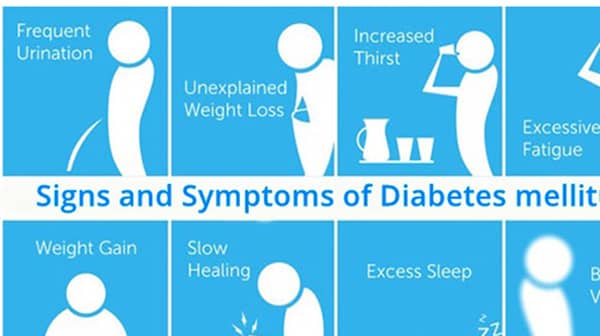Diabetes Mellitus is a metabolic disorder caused by the failure of insulin to pump glucose into the cells of the body. The failure can be at the level of the cells where the cells do not respond to insulin by opening the door through which glucose passes into the cells. Insulin failure can also be due to complete or partial failure of the beta-cells of the pancreas, with the result that there is no insulin or not enough in circulation.
There are mainly two types of diabetes: Type 1 DM which used to be known as juvenile-onset diabetes is common among young children. It is due to an autoimmune disorder whereby the immune system of individual attacks and destroys the beta cells of the pancreas of the same individual. In this type of diabetes, there is no insulin in circulation at all and the individual must receive an injection of insulin daily for life.
Type 2 DM, used to be known as adult-onset diabetes mellitus, affects mainly adults. It is a disorder that is associated with partial failure of the function of insulin. In this type of DM, the patients are not dependent on insulin. They are treated with drugs by the orthodox medical practitioners. This is the focus of our discussion and in alternative medicine, patients have done well with lifestyle and diet changes, exercise, and natural supplements.
Insulin resistance
As I mentioned earlier, insulin, a hormone produced and secreted by the beta cells of the pancreas, is responsible for driving glucose in the blood circulation into the cells either for energy production or storage. What this means is that after every carbohydrate meal and the glucose level in the blood begins to rise, insulin production and release also start to increase. This insulin drives the glucose above the normal blood level of insulin into the cells. When that is done and the level of glucose in the blood returns to normal, insulin secretion stops.
Now, our meals in this part of the world are high carbohydrate and high-fat diet. The carbohydrate portion of what we eat is mainly starchy foods that have high glycaemic indices. The glycaemic index of a nutrient is the rate at which such a nutrient is absorbed into the blood (or the rate at which a nutrient appears in the blood) and causes the release of insulin. These starchy nutrients with high glycaemic indices being the mainstay of our diet cause a sudden release of insulin into the circulation. I am talking about foods such as white flour products, polished rice, pasta, yam, potatoes etc. These types of food cause what is known as an insulin spike or surge. This is the sudden outpouring of insulin into the circulation in response to the sudden increase of glucose. This will, in a short period of time, drive all the glucose into the cells. When this is done, the individual begins to feel hungry and reaches for a soft drink and a snack, both of which will stimulate another insulin spike. This is repeated all day long for several weeks, months, and even years until there comes a time when the cells no longer respond appropriately to the insulin; response begins to diminish. As it happens, the level of glucose in the blood will continue to rise and force the beta cells of the pancreas to secrete more insulin to try and drive the glucose into the cells. As this goes on, the level of insulin reaches an all-time high, a condition that is known as hyperinsulinaemia.
There are very high levels of insulin in the circulation which should effectively regulate the blood glucose level. However, we find that after some time, the cells become resistant to the insulin which begins to fail in their function of pumping glucose into the cells. Along with the elevated blood insulin, there’s also hyperglycemia (elevated blood glucose.) This is the disorder that is referred to as insulin resistance.
The following are features of the adverse effects of elevated insulin level in the body: hypertension, low HDL (good) cholesterol, high LDL (bad) cholesterol, high triglycerides, increased incidences of blood clots, increased rate of inflammation of the arteries, and development of central obesity (weight gain mainly around the lower abdomen, giving an apple appearance.
*Paul Nanna is a Medical Doctor and a Pastor in the Redeemed Christian Church of GOD. Telephone: +2348033018181. Email address: [email protected]. Blog: nutritionandhealthmanagers.com. Twitter Handle: @paulnanna.






